- Home
- Edgar Allan Poe
The Science Fiction of Edgar Allan Poe (Penguin Classics) Page 43
The Science Fiction of Edgar Allan Poe (Penguin Classics) Read online
Page 43
7. (p. 94) The senses were unusually active… taste and smell were inextricably confounded: Hervey Allen comments: ‘The rest of the description amounts to a delineation of the symptoms of a drug addict… There is direct evidence by Poe’s cousin, Miss Herring, that, soon after he wrote this, August 1841, he was using opium to excess.’ (Israfel, 1926, p. 413)
cf. Baudelaire:
Comme de longs échos qui de loin se confondent
Dans une ténébreuse et profonde unité,
Vaste comme la nuit et comme la clarté,
Les parfums, les couleurs et les sons se répondent.
‘Correspondances’
Like long-drawn echoes merging far away
To a deep and shadowy harmony,
Vast as the night, as vast as light,
Scents, colours and sounds to each other reply.
8. (p. 94) vision… I appreciated it only as sound: Elsewhere Poe offers a more exact example:
The orange ray of the spectrum and the buzz of the gnat (which never rises above the second A), affect me with nearly similar sensations. In hearing the gnat, I perceive the color. In perceiving the color, I seem to hear the gnat.
Which he followed by a scientific solution:
Here the vibrations of the tympanum caused by the wings of the fly, may, from within, induce abnormal vibrations of the retina, similar to those which the orange ray induces, normally, from without. By similar, I do not mean of equal rapidity – this would be folly; – but each millionth undulation, for example, of the retina, might accord with one of the tympanum; and I doubt whether this would not be sufficient for the effect.
‘Marginalia’, Democratic Review (November 1844)
9. (p. 96) I measured the irregularities of the clock upon the mantel: The association of the ‘idea of Time’ and ‘that of mere locality’ wrote Edward Hungerford, ‘is startlingly suggestive when one finds that [they] were represented in phrenology by definite, primary organs. Was Poe’s analysis of these psychical states caught from the science of mind? Of the organ of Time Gall had written: “We see persons who find amusement in a collection of watches and clocks, and must have them all go with the greatest exactness.” ’ (‘Poe and Phrenology’, American Literature vol. 2, 1930, p. 221)
Select Bibliography
ALLEN TATE, ‘The Angelic Imagination: Poe and the Power of Words’, Kenyon Review vol. 14 (1952), pp. 455–75; reprinted in The Man of Letters in the Modern World: Selected Essays, 1928–1955 (New York: Meridian Books, 1955), pp. 113–45
A TALE OF THE RAGGED MOUNTAINS
First published
Godey’s Lady’s Book (April 1844)
Reprinted
Columbia Spy (27 April 1844)
Broadway Journal (29 November 1845)
Translated
Baudelaire, ‘Une Aventure dans les Montagnes Rocheuses’, L’Illustration (December 1852); retitled ‘Les Souvenirs de M. Auguste Bedloe’
Poe seems intent on supplying both a natural and a supernatural key. Augustus Bedloe is a morphine addict who takes ‘very large’ doses each morning for his neuralgia. Yet his attendant, Dr Templeton, reveals intimations of his patient’s dream even as he tells it, exercising a ‘magnetic relation’ – a kind of mental telepathy almost – by his mesmeric or hypnotic control. Which then is it: a case of transfer of traumatic experience? or of metempsychosis during that ‘strange interregnum of the seasons’?
In the hazy ‘Indian Summer’ appears an ‘Indian city’; the revolutionary site of Saratoga conjures up an ‘insurrection’ in Benares; a hallucinatory wound ‘upon the right temple’ prompts Di Templeton to apply poisoned leeches to ‘the right temple’. Is Virginian Bedlo [e], then, really the double, or inverted alter ego, of British Oldeb? Has a transmigration of souls been synchronized within a single vision? Is it only in a trance, when freed by drugs from the confinements of space and time, that soul can recognize familiar soul and identities merge in the charged present?
Or is it all a hoax? Is first Bedloe, then the narrator, and so the reader, gulled by Templeton’s horror-struck belief in metempsychosis? Is the patient not merely the credulous dupe, but the marked victim, of his physician’s control? Is Bedloe’s mind deranged, as his body is condemned, by the older man’s irresponsible – possibly unscrupulous, even perversely malignant – therapy?
But the dreamer is Poe, playing at reincarnation with such typographical inversions. The Ragged Mountains lie to the south of the University of Virginia at Charlottesville. In 1827, aged eighteen, Poe himself had just gone down after two abortive terms at the University. With Freud’s blessing, Marie Bonaparte knew just what to make of such dreams. ‘Indeed it would be hard to think of a transference or dependence more complete than that of Bedloe on Templeton.’ A ‘homosexual attraction’, she calls it, or ‘homosexual fixation’. The shocks become erotic shocks: the poisonous snake, the ‘piercing penis’; the leech, an ‘impregnation by semen’. ‘We have here’, she concludes, ‘a classic delineation, in sado-phallic terms, of a passive homosexual relation to the father, which all small boys experience at some time and which persists in many men’s unconscious.’ (The Life and Works of Edgar Allan Poe, a Psycho-Analytic Interpretation, 1933, ch. 42, p. 568)
1. (p. 99) In moments of excitement the orbs… seeming to emit luminous rays:
Facial neuralgia was one of the ailments most commonly relieved not only by mesmerism, but by real galvanic current. A patient… could apply the electrodes from a simple galvanic pile or Cruickshank’s ‘crown of cups’ to his temples. The ‘luminous rays’ from Bedloe’s eyes are a further hint to the ‘electromagnetic’ nature of his animating force.
Doris V. Falk, ‘Poe and the Power of Animal Magnetism’, p. 541
2. (p. 100) a physician… first encountered at Saratoga: Saratoga, of course, is a spa resort renowned for its springs. But it is also the site of General Burgoyne’s surrender on 17 October 1777 – linking the first great victory of the American ‘insurrection’ (or revolutionary war) with that Indian ‘insurrection’, Saratoga with Benares. It was General Burgoyne, paradoxically, on his return to England who managed the impeachment of Warren Hastings.
3. (p. 100) a convert… to the doctrines of Mesmer: Franz Anton Mesmer (1733–1815), the German physician, whose interest in animal magnetism led to a treatment based on hypnosis. He built up a large and fashionable practice in Paris with his magnetic cures.
When mesmerist and patient were en rapport they both became conductors of the magnetic fluid or, as some practitioners held, of a newly discovered ‘imponderable’ comparable to – or perhaps identical with – electricity, light, or electromagnetism. In fact, before he accomplished some famous ‘cures’ using actual magnets, Mesmer himself had considered the force to be electrical… Not until the 1840s did suggestion and the trance come to be regarded as the keys to the process. James Braid in his influential study, Neurypnology, or the Rationale of Nervous Sleep (London, 1843), coined the term ‘hypnosis’ and argued that all the phenomena of hypnotism-mesmerism could be accounted for by suggestion.
Doris V. Falk, ‘Poe and the Power of Animal Magnetism’, p. 536
4. (p. 101) the habitual use of morphine, which he swallowed in great quantity: Like heroin, an opium derivative: with ‘its customary effect – that of enduing all the external world with an intensity of interest… and immethodical thought’.
5. (p. 105) Novalis errs not in saying that ‘we are near waking when we dream that we dream’: Two years earlier Poe had quoted at length in German from Novalis’s Moralische Ansichten for his epigraph to ‘The Mystery of Marie Rogêt’. But this quotation he found in Sarah Austin’s Fragments from German Prose Writers (1841). See Novalis, Schriften (Jena, 1907), vol. 2, p. 141.
6. (p. 106) the writhing creese of the Malay: A kris, or kriss (Malay, keris) is a dagger with two scalloped cutting edges and serpentine blade.
7. (p. 106) One of them struck me upon the right temple: This whole passage derives, almost ve
rbatim, from descriptions of the 1781 insurrection at Benares of ‘Cheyte Sing’ in Thomas Macaulay’s review of G. R. Gleig’s three-volume compilation of the Memoirs of the Life of Warren Hastings, First Governor-General of Bengal (Edinburgh Review, 1841). See Maurice Le Breton, ‘Edgar Poe et Macaulay’, Revue Anglo-Americaine vol. 13 (October 1935), pp. 38–42.
Was Poe attracted, by assonance, to Bedloe? For even the name has been traced to Macaulay’s discussion of the charges brought by East India Company officials against Warren Hastings: ‘in that part of the world, a very little encouragement from power will call forth, in a week, more Oatses, and Bedloes, and Dangerfields, than Westminster Hall sees in a century’. William Bedloe confirmed the false testimony of Titus Oates against the Catholics in 1678. See Burton R. Pollin, Discoveries in Poe (1970), ch. 2, pp. 25–7.
The name, in any case, was familiar to Poe from New York harbour. Since 1886 the Statue of Liberty has greeted immigrants from Bedloe’s Island.
But he seems to have been unusually meticulous in his homework for this incident, moving on from Macaulay’s essay to Gleig’s Memoirs themselves (for the ‘fatal sally’), to Warren Hastings’s own Narrative of the Insurrection, 1782 (for the ‘kiosk’ or garden pavilion), as well as Sheridan’s impeachment speeches. See Mukhtar Ali Isani, ‘Some Sources for Poe’s “Tale of the Ragged Mountains” ’, pp. 38–40.
8. (p. 106) a violent and sudden shock through my soul, as if of electricity: Followed by a second shock ‘as of a galvanic battery’. The current of animal magnetism – so charged between Templeton and Bedloe – flares to its critical flash-point: ‘I had no bodily, no visible, audible, or palpable presence’. Neither Bedloe exactly, nor Oldeb now in the mesmeric bond, what is released seems to be a wholly autonomous force, a cohesive electric field within a field that pervades the animate and inanimate worlds.
9. (p. 107) the likeness of a dead frend – a Mr Oldeb: Yet this unlikely, and wholly unBritish, name suggests something of a hoax. Boyd Carter first pointed out that Poe’s ‘Indian’ affray (so bizarre in the Ragged Mountains) parallels a more orthodox ‘Indian’ episode (of the American wilderness) in Charles Brockden Brown’s Edgar Huntly; or Memoirs of a Sleep-Walker (1799). Both Huntly and Templeton are preoccupied by a friend’s murder; in both the murder was committed by ‘Indians’. Only in Edgar Huntly it is ‘an Indian woman named Old Deb’ who provides the solution, ‘and of course the name Oldeb provides the “solution” for the narrator in Poe’s tale’ (G. R. Thompson, ‘Is Poe’s “A Tale of the Ragged Mountains” a Hoax?’, p. 460).
10. (p. 107) the insurrection of Cheyte Sing… took place in 1780: It was in August 1781 that Warren Hastings descended on Benares to extort tribute from its Rajah, Chait Singh. Rebuffed, he impetuously arrested the Rajah within the Shivala Ghat palace overlooking the Ganges, though only two platoons of sepoys were at hand to set up guard. And they, in the confusion, were issued no ammunition.
The Rajah escaped by his rope of turbans into a waiting boat; the uprising was quickly crushed and he was exiled. But he was not forgotten. The Benares affair became one of the central counts against the Governor-General on his impeachment by Parliament.
11. (p. 108) at the very period in which you fancied these things… I was engaged in detailing them upon paper: Dr Templeton’s magnetic hold on his patient, that is, was so strong that Bedloe was affected even at a distance of several miles. As a physician (quoted by Sidney E. Lind) confirms: ‘Magnetism can be conveyed to great distances, when persons are in perfect communication.’ (The Animal Magnetizer, 1841)
12. (p. 108) one of the venomous vermicular sangsues… of Charlottesville: That is, a bloodsucker or leech. But it was Poe, as Burton R. Pollin demonstrated, who first brazenly wormed the French term into an English text and single-handedly caused an upheaval in all subsequent dictionaries (English and American). He recalled the term, it appears, from a passage in Victor Hugo’s Notre-Dame de Paris that was again to do service for ‘The Cask of Amontillado’ (1846). Needless to say there is no black and snake-like leech peculiar to Virginia; nor is such a Creole term conceivable in Virginia; nor could a single leech, of whatever species, be lethal.
13. (p. 108) the name of the deceased had been given as Bedlo : Thus ‘a mere typographical error’ confirms that palindrome that is Poe’s farcical sign for the metempsychosis.
Augustus Bedloe ‘certainly seemed young – and he made a point of speaking about his youth’. But internally the story is dated to 1827; the insurrection of Cheyte Sing ‘took place in 1780’. So Bedloe was in fact forty-seven at the time of his death. Dr Templeton, ‘an old gentleman, perhaps seventy years of age’, must have been about twenty-three at the time of the Mutiny.
Select Bibliography
SIDNEY E. LIND, ‘Poe and Mesmerism’, Publications of the Modern Language Association vol. 62 (1947), pp. 1077–94
BOYD CARTER, ‘Poe’s Debt to Charles Brockden Brown’, Prairie Schooner vol. 27 (1953), pp. 190–96
DORIS V. FALK, ‘Poe and the Power of Animal Magnetism’, Publications of the Modern Language Association vol. 84 (1969), pp. 536–46
G. R. THOMPSON, ‘Is Poe’s “A Tale of the Ragged Mountains” a Hoax?’, Studies in Short Fiction vol. 6 (1969), pp. 454–60
MUKHTAR ALI ISANI, ‘Some Sources for Poe’s “Tale of the Ragged Mountains” ’, Poe Studies vol. 5 (1972), pp. 38–40
THE BALLOON-HOAX
First Published
New York Sun (13 April 1844), as a broadside printed on one side only
Translated
Baudelaire, ‘Le Canard au Ballon’, Le Pays (January–February, 1855)
‘Annexation and war with Mexico are identical,’ declared Henry Clay, the Whig candidate. ‘The Raven’ of Texas, Sam Houston, was manoeuvring his fellow Texans into joining the United States. New England was opposed to another slave state. Then, on Saturday, 13 April 1844, the New York Sun published a broadside, or ‘Extra page’ of the midday issue, preceded by an early morning Postscript – as an appetizer:
BY EXPRESS
ASTOUNDING INTELLIGENCE BY PRIVATE EXPRESS FROM CHARLESTON VIA NORFOLK! – THE ATLANTIC OCEAN CROSSED IN THREE DAYS!! – ARRIVAL AT SULLIVAN’S ISLAND OF A STEERING BALLOON INVENTED BY MR MONCK MASON!!
The publication created a sensation. Premium prices were paid for a copy of the newspaper and the issue was so quickly sold that Poe himself apparently was unable to obtain a copy.
The Sun was the first penny newspaper in New York, specializing in scoops and the sensational treatment of news. The editor, who had immediately purchased Poe’s manuscript, was none other than Richard Adams Locke. Nine years earlier, in the same newspaper, he had perpetrated a similar editorial hoax, about a telescope that revealed life on the Moon. ‘Discoveries in the Moon’ too had taken New York by storm; and made Poe furious. ‘Hans Pfaall’ was only out three weeks: ‘no sooner had I seen the paper than I understood the jest, which not for a moment could I doubt had been suggested by my own jeu d’ésprit’.* Now it was to be his turn. The memory of the New York public was fickle. This was his come-back.
He was not disappointed. For the Columbia Spy he wrote:
The ‘Balloon-Hoax’ made a far more intense sensation than anything of that character since the ‘Moon-Story’ of Locke. On the morning (Saturday) of its announcement, the whole square surrounding the ‘Sun’ building was literally besieged, blocked up – ingress and egress being alike impossible, from a period soon after sunrise until about two o’clock P. M. In Saturday’s regular issue, it was stated that the news had been just received, and that an ‘Extra’ was then in preparation, which would be ready at ten. It was not delivered, however, until nearly noon. In the meantime I never witnessed more intense excitement to get possession of a newspaper. As soon as the few first copies made their way into the streets, they were bought up, at almost any price, from the news-boys, who made a profitable speculation beyond doubt. I saw a half-dollar given, in one instance, for a single paper, and a shill
ing was a frequent price. I tried, in vain, during the whole day, to get possession of a copy. It was excessively amusing, however, to hear the comments of those who had read the ‘Extra’.†
(25 May 1844)
Next day the story was reprinted in the Sunday Times, edited by one of Poe’s few Jewish friends, Major Mordecai M. Noah.
So Poe, single-handed, managed to divert his contemporaries from the raging controversy over the admission of Texas into the Union. They were mad on progress. Very well, he would give them progress. As early as 1836 Charles Green, ‘of Nassau-balloon notoriety’,‡ had talked of an Atlantic flight. He had even built a model of an Atlantic Balloon, making trial runs in 1840. It was operated by clockwork-driven propellers and had a rudder. Poe, in distant Philadelphia, was fascinated:
Some time ago, Mr Charles Green of England, published a statement of the grounds upon which he bases his assertion of the possibility of passing, in a balloon, across the Atlantic, from New York to Europe. His facts should certainly be depended upon; for they are the result of observations made during two hundred and seventy-five ascents. For our own part, so far from gainsaying one word that the aeronaut asserts, we have for a long time past wondered why it was that our own Wise had not aeronauted himself over to Europe* – than which nothing could be a more feasible manoeuvre.
Burton’s Gentleman’s Magazine (March 1840)
Now, writing as it were after the event, he continued:
There is nothing put forth in the Balloon Story which is not in full keeping with the known facts of aeronautic experience – which might not really have occurred. An expedition of the kind has been long contemplated, and this jeu d’esprit will, beyond doubt, give the intention a new impulse. For my own part, I shall not be in the least surprised to learn, in the course of next month, or the next, that a balloon has made the actual voyage so elaborately described by the hoaxer. The trip might be made in even less time than seventy-five hours – which give only about forty miles to the hour.

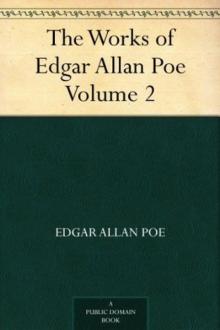 The Works of Edgar Allan Poe — Volume 2
The Works of Edgar Allan Poe — Volume 2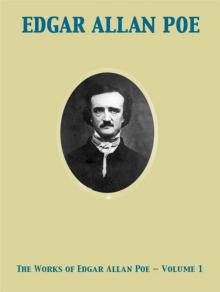 The Works of Edgar Allan Poe — Volume 1
The Works of Edgar Allan Poe — Volume 1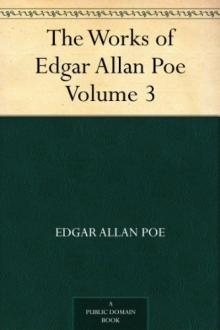 The Works of Edgar Allan Poe — Volume 3
The Works of Edgar Allan Poe — Volume 3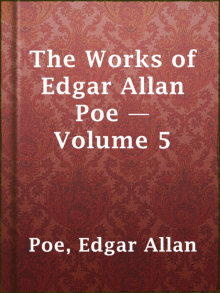 The Works of Edgar Allan Poe — Volume 5
The Works of Edgar Allan Poe — Volume 5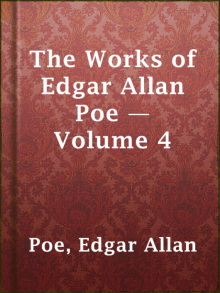 The Works of Edgar Allan Poe — Volume 4
The Works of Edgar Allan Poe — Volume 4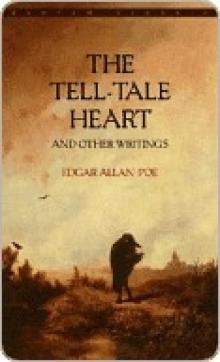 The Tell-Tale Heart
The Tell-Tale Heart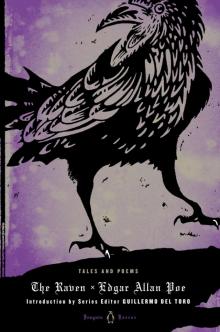 The Raven (Penguin)
The Raven (Penguin)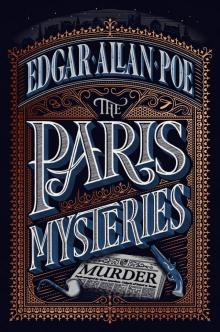 The Paris Mysteries
The Paris Mysteries Tales of Terror from Edgar Allan Poe
Tales of Terror from Edgar Allan Poe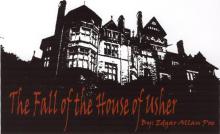 The Fall of the House of Usher
The Fall of the House of Usher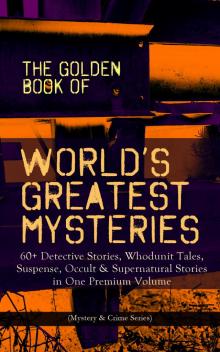 The Golden Book of World's Greatest Mysteries
The Golden Book of World's Greatest Mysteries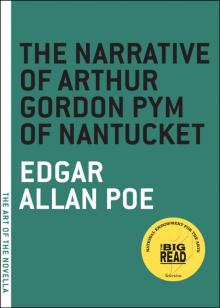 The Narrative of Arthur Gordon Pym of Nantucket
The Narrative of Arthur Gordon Pym of Nantucket Ligeia
Ligeia The Landscape Garden
The Landscape Garden Complete Tales & Poems
Complete Tales & Poems Great Tales and Poems of Edgar Allan Poe
Great Tales and Poems of Edgar Allan Poe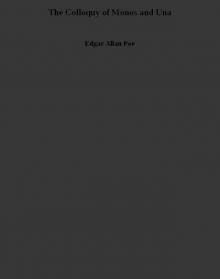 The Colloquy of Monos and Una
The Colloquy of Monos and Una The Oblong Box
The Oblong Box Thou Art the Man
Thou Art the Man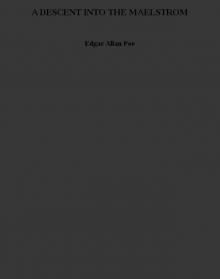 A DESCENT INTO THE MAELSTROM
A DESCENT INTO THE MAELSTROM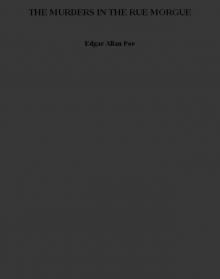 THE MURDERS IN THE RUE MORGUE
THE MURDERS IN THE RUE MORGUE The Business Man
The Business Man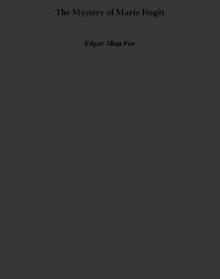 The Mystery of Marie Rogêt
The Mystery of Marie Rogêt Metzengerstein
Metzengerstein The Man That Was Used Up
The Man That Was Used Up William Wilson
William Wilson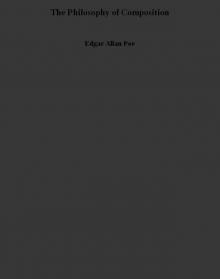 The Philosophy of Composition
The Philosophy of Composition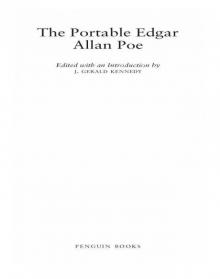 The Portable Edgar Allan Poe
The Portable Edgar Allan Poe Bon-Bon
Bon-Bon A Predicament
A Predicament The Premature Burial
The Premature Burial The Angel of the Odd
The Angel of the Odd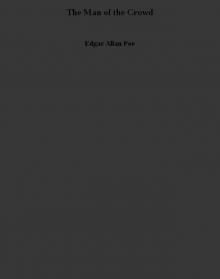 The Man of the Crowd
The Man of the Crowd Never Bet the Devil Your Head
Never Bet the Devil Your Head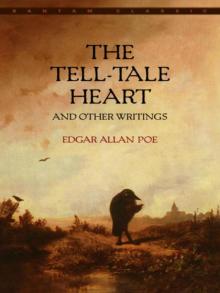 The Tell-Tale Heart and Other Writings
The Tell-Tale Heart and Other Writings The System of Doctor Tarr and Professor Fether
The System of Doctor Tarr and Professor Fether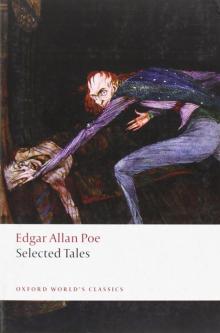 Selected Tales (Oxford World's Classics)
Selected Tales (Oxford World's Classics) Essential Tales and Poems of Edgar Allan Poe (Barnes & Noble Classics Series)
Essential Tales and Poems of Edgar Allan Poe (Barnes & Noble Classics Series) MS. Found in a Bottle
MS. Found in a Bottle Some Words with a Mummy
Some Words with a Mummy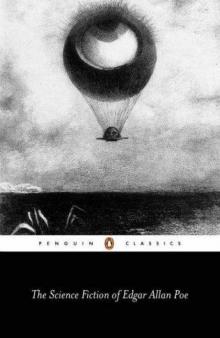 The Science Fiction of Edgar Allan Poe (Penguin Classics)
The Science Fiction of Edgar Allan Poe (Penguin Classics) King Pest
King Pest CRITICISM
CRITICISM How to Write a Blackwood Article
How to Write a Blackwood Article Mystification
Mystification Diddling Considered as One of the Exact Sciences
Diddling Considered as One of the Exact Sciences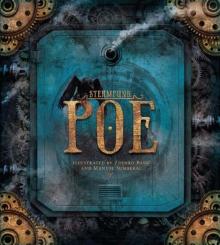 Steampunk Poe
Steampunk Poe The Literary Life of Thingum Bob, Esq.
The Literary Life of Thingum Bob, Esq.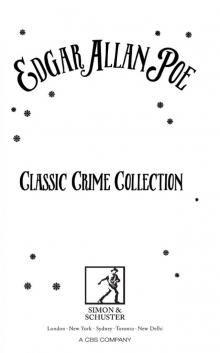 Classic Crime Collection
Classic Crime Collection Complete Stories and Poems of Edgar Allen Poe
Complete Stories and Poems of Edgar Allen Poe Berenice
Berenice The Black Cat
The Black Cat The Slender Poe Anthology
The Slender Poe Anthology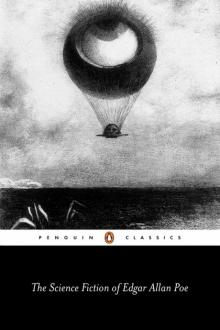 The Science Fiction of Edgar Allan Poe
The Science Fiction of Edgar Allan Poe The Assignation
The Assignation The Thousand-and-Second Tale of Scheherazade
The Thousand-and-Second Tale of Scheherazade The Raven and Other Short Stories
The Raven and Other Short Stories The Spectacles
The Spectacles Hop-Frog
Hop-Frog The Purloined Letter
The Purloined Letter Mellonta Tauta
Mellonta Tauta The Balloon-Hoax
The Balloon-Hoax Landor's Cottage
Landor's Cottage Mesmeric Revelation
Mesmeric Revelation The Pit and the Pendulum
The Pit and the Pendulum